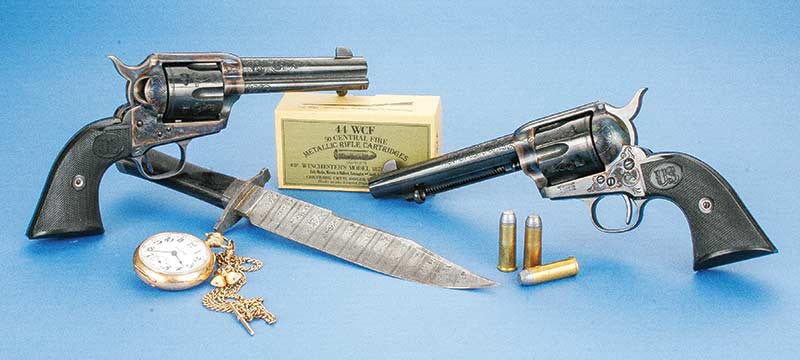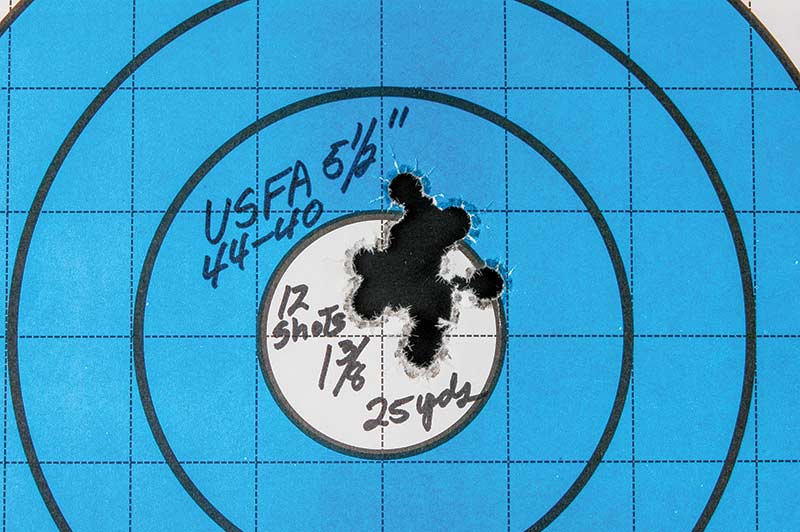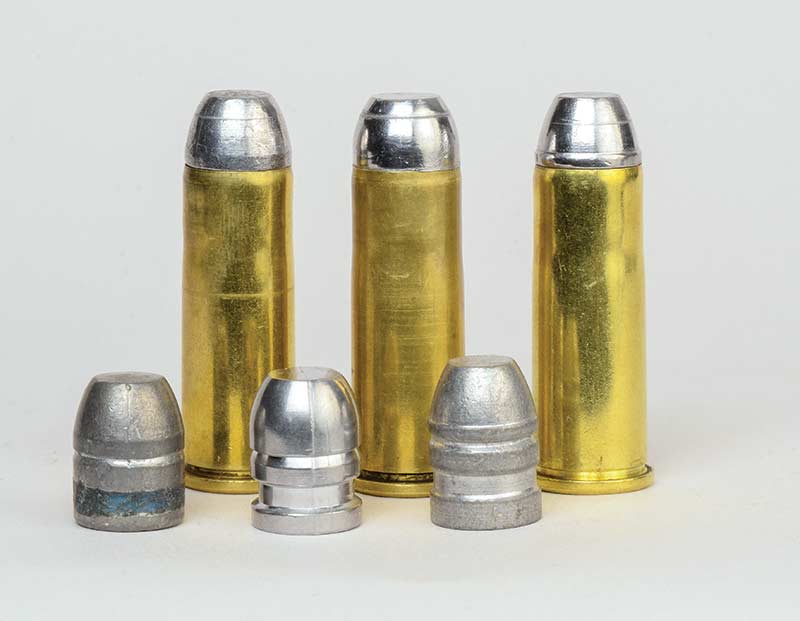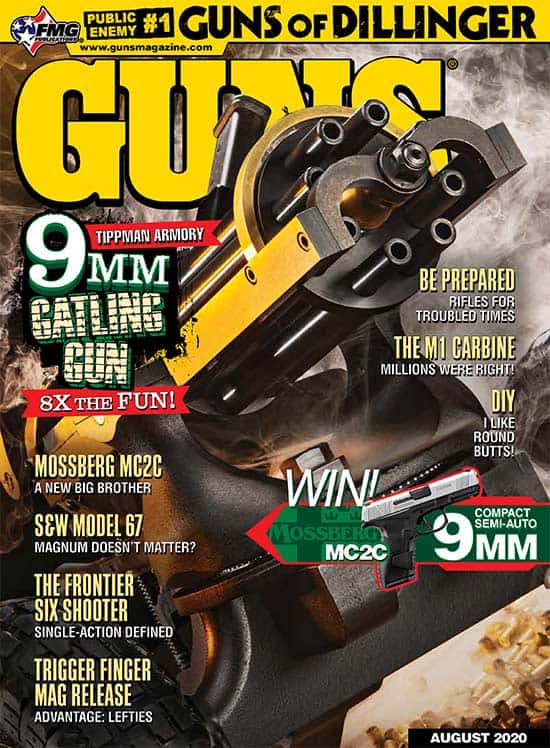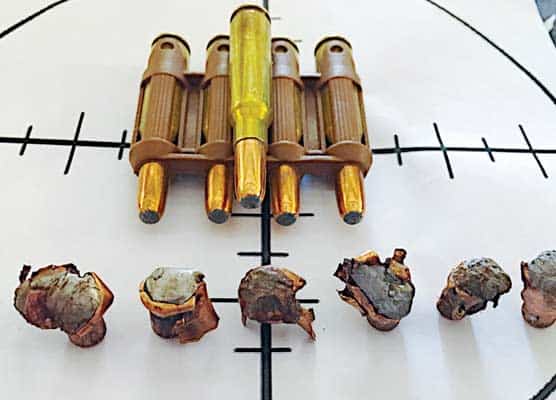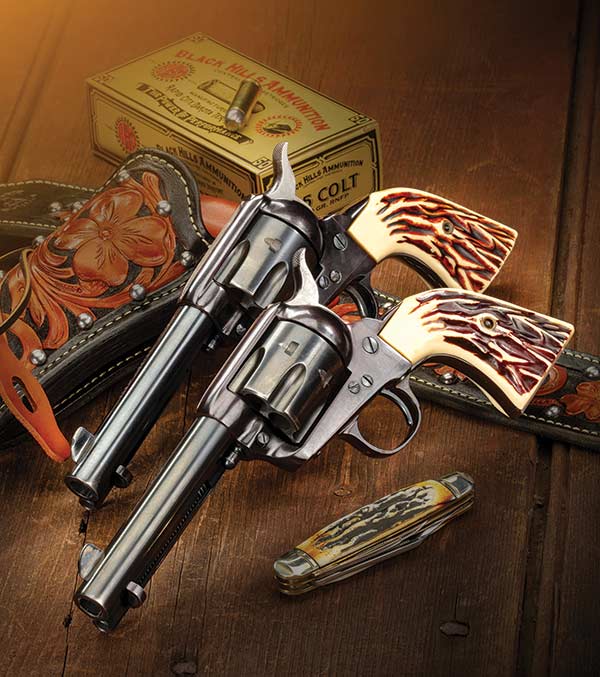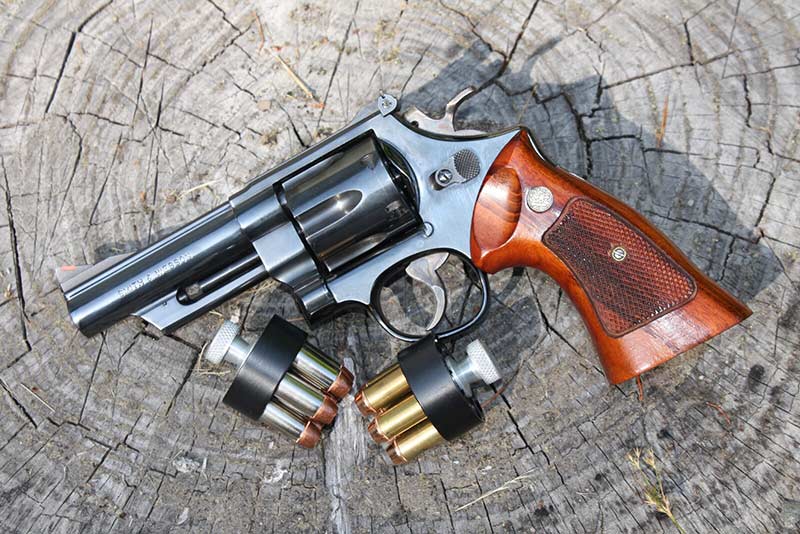Colt Frontier Six-Shooter
What Does it Mean?
Recently on an Internet website a fellow asked the following question — “I bought a Colt single-action. The side of the barrel says ‘Colt Frontier Six Shooter’ There’s no caliber marking so what is it?”
I wanted to weep! I wanted to scream! For heaven’s sake doesn’t everyone know what the marking means? It’s almost sacred to Colt single-action lovers like me!
What It Means
Here’s the deal — any Colt revolver, either the single-action, Bisley or later Model 1878 double-action, marked on the left side of the barrel “Colt Frontier Six Shooter” is by definition chambered for the .44 WCF. (Now commonly called .44-40 so we’ll stick with the current name.) But, it’s important to note if no such marking is present on the left side of the barrel a Colt might still be .44-40. A friend has his father’s .44-40 made in 1881. It has a slick left barrel side. Many “Colt Frontier Six Shooter” marked and unmarked .44-40s had a very tiny .44CF stamped at the left rear of their trigger guards.
Colt began offering .44-40 as a single-action chambering in either late 1877 or 1878. Sources vary. Between serial numbers 41,000 and 45,000 the factory began acid etching the term “Colt Frontier Six Shooter” on barrels. This continued to approximately 1889 at the 130,000 serial number range which is when “Colt Frontier Six Shooter” became a roll stamp. It was standard until production ceased for the first time in 1941. By then 71,391 standard fixed-sight single-actions, single-action targets, Bisley’s and target sight Bisley’s had been made as .44-40s.
No standard production Colt SAA 44-40s were produced during the Second Generation of manufacture between 1956 and 1974. However, in the 1873-1973 Peacemaker Centennial commemoratives 2,002 of the big beautiful 7-1/2″ barreled, nickel-plated Colt Frontier Six Shooters were made complete with an etched panel and .44 CF on trigger guard. I liked them so much I had a matched pair set up with bison bone grips. (Don’t ask me for the maker’s name. He has passed away.)
Third Time A Charm?
The Third Generation of Colt single-action production began in 1976 and to my utter surprise at the 1982 NRA Convention in Philadelphia, Colt announced the .44-40 would again be offered as a caliber option. Right there on the spot in the Colt booth, I ordered one. When it arrived, at first glance I though Colt had personally insulted me and all the Colt single action lovers worldwide. They marked the left side of my new sixgun’s barrel .44-40! I wanted to pitch a fit but eventually calmed down and accepted the new marking.
However, about 1995 I forgave Colt. Once again they put the Colt Frontier Six Shooter roll stamp on .44-40s and, even better, put it on their misnamed “black powder frame” version. (This version has the cylinder retaining pin angling in from the front of the frame, instead of the spring loaded transverse latch that has been standard since the 1890s.) I bought a pair with 4-3/4″ barrel lengths and had them fitted with ivory grips with my MLV initials scrimshawed in.
Parts Is Parts
Here I’d like to insert a little story. Back in my 1968/1972 college days in Huntington, West Virginia, I was a frequent visitor to a gun store named Morris Watch Shop in the nearby town of Milton. There was a box of parts on a shelf labeled Colt SAA, and I finally prevailed upon the lady clerk to let me paw through it. Among other things were two new Colt Frontier Six Shooter barrels of 5-1/2″ and 7-1/2″ lengths. In 1976 I was back in the area visiting family and made a special side trip to Milton to see if those barrels were still there — and they were! I bought the 5-1/2″ for $37.50. Ten years later back there for another visit, again I went to Morris Watch Shop and the 7-1/2″ one was still in the parts box. I paid $62.50 for it. The short one was put on what started as a Colt .357 Magnum SAA. The long one languished in my own parts drawer until 2019 when I gave it to a friend.
With the two nice sets of Colt Peacemaker Centennials on hand I pretty much ignored obtaining more until discovering the now-defunct firm of United States Firearms (USFA). From the mid-1990s until 2011 they made exquisite recreations of the Peacemaker in a myriad of styles. So, in 2006, I ordered an engraved pair — but not a matched pair. One was for me with my initials for the serial number and one was for Yvonne with her initials for serial number. She prefers 5-1/2″ single-action barrel lengths and I liked 4-3/4″. USFA couldn’t use the word Colt but they did agree to mark our new .44-40s as “Frontier Six Shooter.” As the accompanying photo shows both are also exquisitely accurate. It’s a shame the company folded.
Load ’Em Up!
Over the last 45 years I’ve engaged in reloading for Colt Frontier Six Shooters, ranging from my friend’s 1881 sample to my most recent Third Generation made in 2004. And brothers, let me say, they vary immensely. With my friend’s antique one, we realized it had to have black powder for propellant. I loaded some .44-40s with FFg and soft lead bullets of the recommended 0.427″ diameter. They wouldn’t chamber! So I ordered a 0.425″ sizing die and we were in business. Later I found in a 1926 dated Ideal Reloading Handbook stating early bullet diameter for .44-40s was nominally 0.424″ and Colt cylinders were made for factory rounds so loaded. Around the turn of the 19th/20th centuries 0.427″ became the new nominal dimension.
With my 1982 .44-40 bullets of 0.427″, the rounds gave mediocre accuracy. Long story short, the problem was cylinder chamber mouths. Those 0.427″ bullets were going out 0.431″ to 0.433″ chamber mouths. Next the Peacemaker Centennials came along and by this time I was using 0.428″ bullet diameter. The PCs had 0.429″ chamber mouths and shot beautifully — in fact they shot almost as well with black powder as with smokeless. I used this pair of .44s with black powder loads for years in Cowboy Action events until a bum knee forced me to quit the game.
Slugging Away Cabin Fever
Last winter in an effort to stay busy during a frigid Montana winter, I set about to slug the barrels of my Colt single actions, including seven .44-40s. At the same time, all 42 chambers were measured with plug gauges. The Colts ranged from 1904 to 2004 in years of manufacture and every barrel measured 0.426″/0.427″ in their groove diameters. Three had 0.431″ chamber mouths for all six chambers. Those dated from 1904 and the 1980s. The other four had two from the 21st century at 0.428″ and the two PCs from the 1970s were 0.429″.
At this point in my life I don’t experiment much. My favorite home-cast bullet design is from RCBS mold #44-200FN. It weighs 214-gr. of 1-20 tin to lead alloy. For commercially cast bullets I’m happy with any brand using the Magma Engineering mold for a 200-gr. bullet. As I said, 0.428″ is my preferred bullet diameter, two powders satisfy me completely — Trail Boss at 6.0 grains or Winchester 231 (aka Hodgdon HP38) at 6.8 grains. The first load is easy shooting at about 800 fps while the other is a bit more powerful at about 900 fps. Both of those figures are for 7-1/2″ barrels.
In my old age I’ve mellowed a bit. My most recent 21st century .44-40s are labeled as such but I still prefer to see the magical Colt Frontier Six Shooter on mine.
